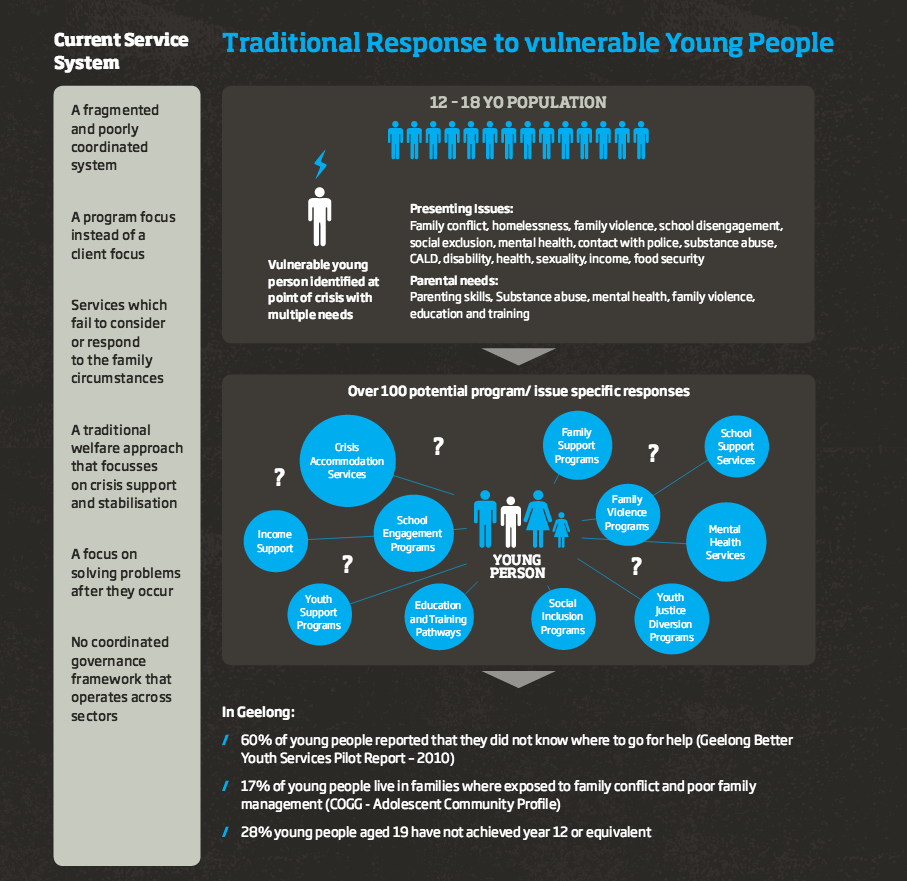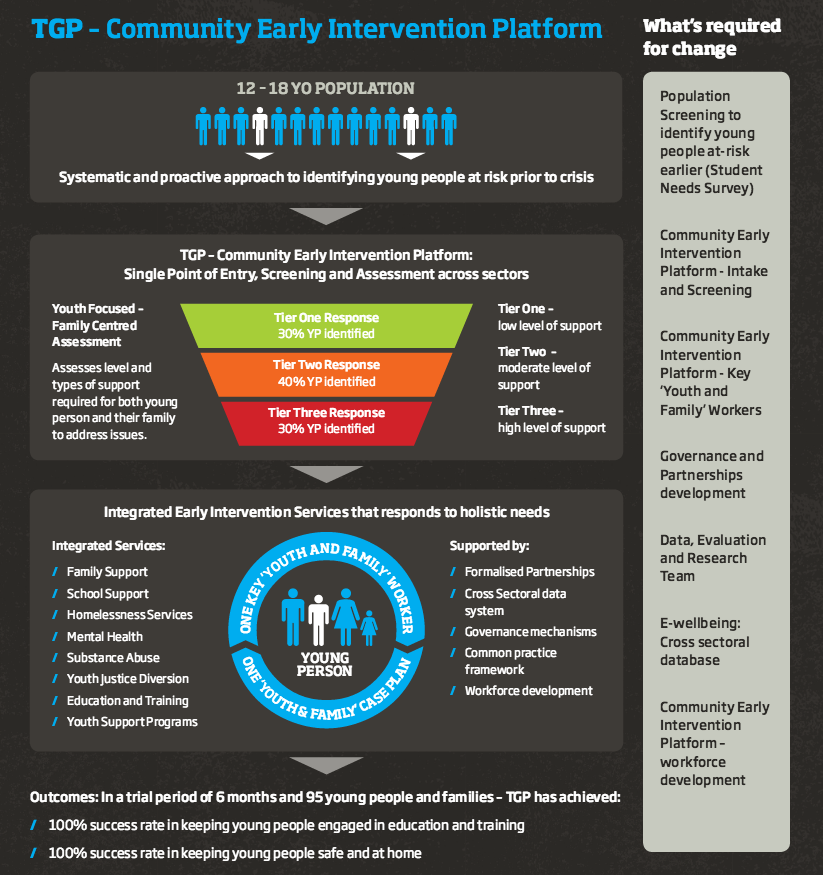The below infographics, published by The Geelong Project (TGP) in Australia as part of a recent report, takes a look at the traditional response to vulnerable young people, and the organization’s recommendations for reform.

Traditional Responses to Youth Homelessness
Traditional responses to youth homelessness take a piece-meal approach, consisting of scattered programs and services. These responses also tend to be reactive, responding to the needs of youth only after they become homeless. Common services include education and training pathways, social inclusion programs, family violence programs, youth justice diversion programs and mental health services.
Unfortunately, most responses to youth homelessness consist of a service system that is fragmented and poorly coordinated. This means that it can be difficult to navigate available services; 60% of vulnerable young people part of TGP reported that they did not know where to go for help in 2010. While the right services might exist, the absence of a coordinated governance framework that operates across sectors and organizations mean that services may be undelivered to target populations.
The Geelong Project (TGP)
TGP utilizes a model of early intervention for young people who are at risk of disengaging from school, becoming homeless or entering the justice system. The model operates on partnerships between schools and youth service agencies. Agencies working in family violence, employment, education, and Aboriginal services have all directly contributed to TGP. Program evaluations of the project have demonstrated considerable positive changes in individual outcomes that lead to more youth staying in school and in the family home.
TGP works directly with schools to identify risk. A needs survey is completed by every student to get a sense of each student’s risks and assets. This information, combined with knowledge about student needs from teachers and counsellors, is used to create a shortlist of students deemed to be at risk. A screening interview is then held with students to verify student data and introduce students to the TGP project. During its pilot phase, TGP successfully intervened with over 95 at risk young people who were identified using this approach.

Recommendations for Change
In their report, The Geelong Project makes several recommendations for change. They highlight the need for integrated early intervention services that respond to holistic needs. These services have two main components:
- Integrated services that combine family supports, school supports, homelessness services, mental health programs, substance abuse programs, youth justice diversion, education training, and youth support programs.
- Support for integrated services consisting of cross sectoral alliance, governance mechanisms, a common practice framework, and workforce development for organizations involved in service planning and delivery.
They also talk about the need for screening to identify young people at-risk earlier on, highlighting the benefits of early interventions. For example, factors like trauma and family breakdown have been identified as precursors to homelessness. Youth do not need to identify as homeless in order for their needs to be addressed in these situations. Early intervention and screening for these factors can prevent homelessness, provided they are coupled with supports for at-risk youth. Preventive approaches to youth homelessness have previously been undertaken in both the United Kingdom and Australia to great effect.

